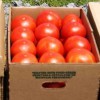Abstract
A BMP study was conducted at the research farm of the UF/IFAS Southwest Florida Research and Education Center in Immokalee, FL. The study evaluated two production systems made up of two levels of water and fertilizer inputs for tomato and watermelon production with seepage irrigation. The average water and P fertilizer rates used by growers in south Florida were contrasted with the recommended BMP rates. Applying BMP-recommended water and phosphorus (P) inputs for seepage-irrigated tomato and watermelon in Florida can reduce water use and P leaching to groundwater without adversely impacting fruit yield. However, given the adverse impacts on watermelon yield due to lower than sufficient levels of K, further research is needed to evaluate the fertilizer recommendations for watermelon, especially K2O rates, to ensure economic viability of farms. Our results showed that adoption of BMP-recommended P rates as a BMP did not reduce crop yield and improved water quality. This 4-page fact sheet was written by Sanjay Shukla, Gregory S. Hendricks, Thomas A. Obreza, and Willie G. Harris, and published by the UF Department of Agricultural and Biological Engineering, June 2014.

